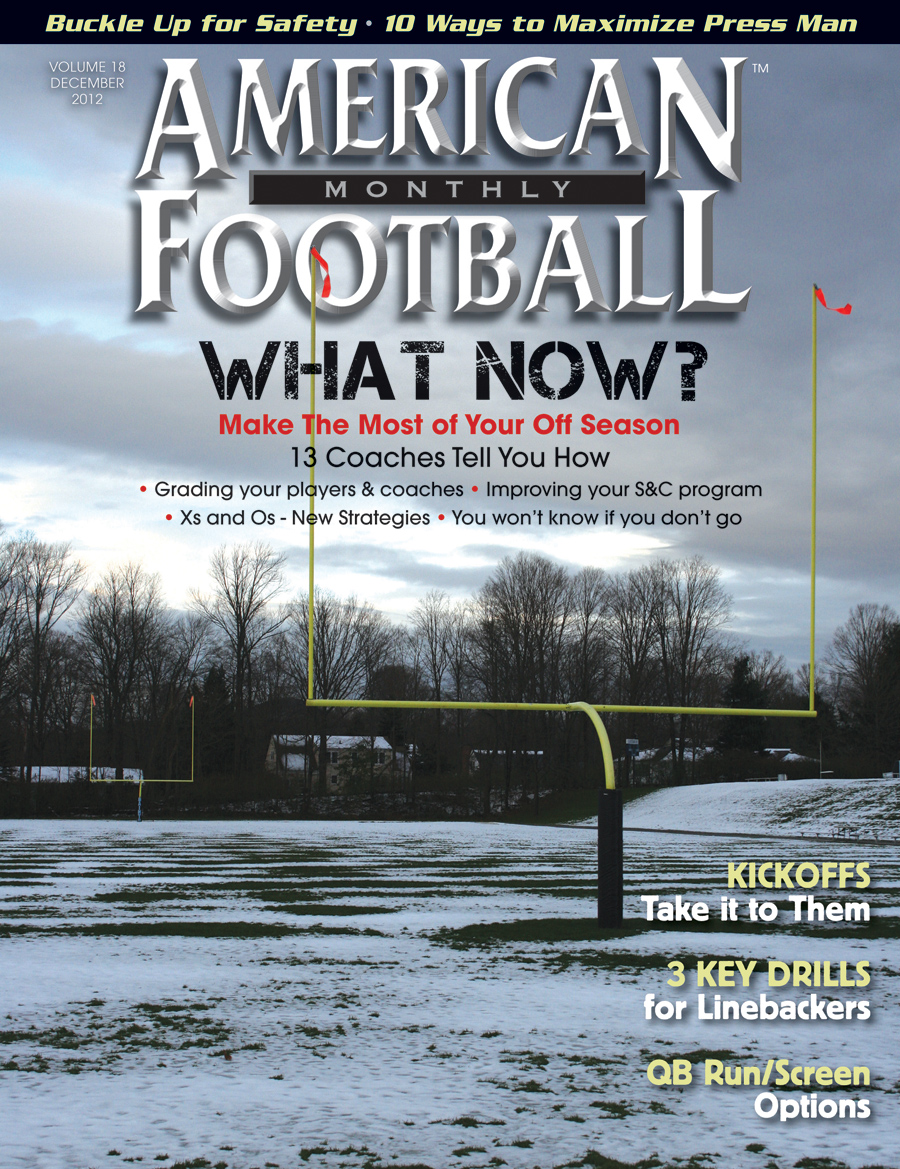Article CategoriesAFM Magazine
|
Buckle Up© More from this issueDespite new rules, helmets are coming off during games at an alarming rate in both high school and college. Bert Bielema, the head coach at Wisconsin, sits on the NCAA rules committee. One of the plays reviewed by the committee last season involved a defensive player who lost his helmet but kept pursuing the ball carrier. The defensive player got blocked and suffered a concussion. “When you’re talking about the health and well-being of young men, who’ve got their whole life in front of them, there’s nothing that’s more important than protecting their safety,” said Bielema. The play above was not an isolated incident. Across all levels of football, players are losing their helmets during play more often than ever before. Why is this happening? Primarily because players will often not snap all of their chin straps securely, causing the helmet to be loose on the player’s head. In some cases, the helmet is not fitted properly and is not tight enough on the athlete’s head before he even hits the field. According to Sander Reynolds, Vice President of Product Development at Xenith, helmet fit and security are key concerns. “At Xenith, we’ve placed a great deal of emphasis on developing a more innovative fit system to specifically address this issue,” he said. “Often, snap buckles are releasing prematurely,” said Reynolds. “Another cause is loose chinstraps, either due to poor design or due to player preference to wear the helmet loose, most likely due to the helmet feeling uncomfortable when fitted improperly. The chincup is sometimes not very deep and slides up easily. This will allow the helmet to come off easier.” According to the NCAA, helmets came off an average of twice per game in 2011 – thousands of times over the course of the season. The NCAA took notice and, this season, instituted a number of rules changes specifically designed to encourage coaches and players to make sure helmets stay where they belong. Specifically: • If a player loses his helmet, it will be treated like an injury and the player must sit out the next play. Rogers Redding, the NCAA’s Coordinator of Officials, sees an increased awareness of the rule among players. “When a player’s helmet comes off, he picks it up and just trots off the field,” he said. The officials don’t have to remind the player to leave the field. There really isn’t any conversation.” There may, however, be a “conversation” between the player and a coach who wants to make sure this doesn’t happen again. The National Federation of High School Associations has adopted similar rules requiring that a player must sit out for the next play if his helmet comes off. “We think the rule change is a very positive one,” said Bob Colgate, Associate Director of the NFHSA. “This fall, the states of Arizona and North Carolina are going to collect data on the number of helmets that come off during high school games and share it with us.” Colgate also said the NFHSA will monitor an NCAA rule this season that penalizes a team 15 yards for unsportsmanlike conduct when a player continues to play without a helmet. USA Football is also worried about the number of helmets coming off of young players. “It’s a concern for all of us because it’s a safety issue,” said Nick Inzerello, USA Football’s Director of Football Development. “Kids need proper fitting helmets as well as chin straps. We should be concerned for the entire season and not just in August when the helmet is first fitted. It should be checked periodically throughout the season.” USA Football goes one step further. “At our level one certification program, there is a coaching certificate program for both proper helmet fitting and shoulder pad fitting,” said Inzerello. “It is a 12-minute video followed by questions so coaches know the procedure of a properly fitted helmet. During actual competition both coaches and officials know the rule that all helmets need to be buckled.” What’s the best way to prevent helmets coming off during games? One, make sure players have their helmet properly fitted. Coaches should be aware of proper fitting procedures and also encourage players to watch the fitting instructions on websites and follow them. Representatives from your helmet manufacturers can be of great assistance in this area. Perhaps most importantly, coaches and players need to be absolutely sure there is a positive engagement on every snap buckle every time it is snapped. No excuses. Player safety is, as it should be, the top priority at all levels. Because playing time is the most important factor to a player, a one-play penalty may be the best deterrent to keep players’ helmets on their heads – where they should be – rather than on the turf. |
|
| HOME |
MAGAZINE |
SUBSCRIBE | ONLINE COLUMNISTS | COACHING VIDEOS |
Copyright 2025, AmericanFootballMonthly.com
All Rights Reserved




